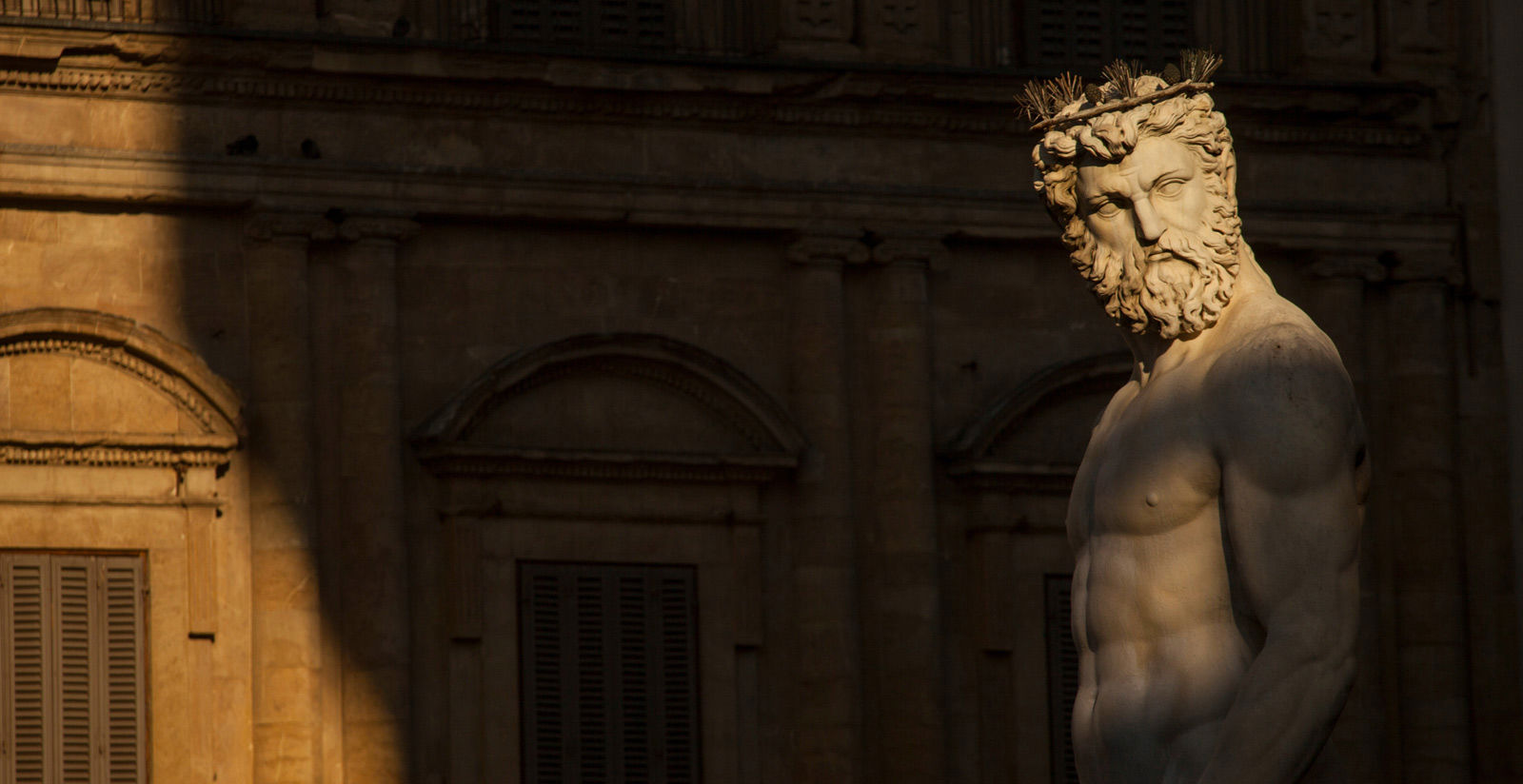Piazza della Signoria has been the centre of Florentine politics since early in the republic's history. It was in 1268 when the Guelph party, once again gained control and decided to take down the houses of their Florentine rivals the Ghibelline. Upon the ruins of the 36 houses that were demolished, this famous “L” shape square became history. No other buildings were ever constructed to take their place and this is also why the buildings around the square are unaligned.
The square's name actually derives from the Palace, designed by Arnolfo di Cambio in 1298, where the Republic government (called the ""Signoria"") resided. The palace continued to maintain its political function in Florence during the reign of the Medici and later under Duke Cosimo I, who resided there between 1540 and 1565. It was during this time that Giorgio Vasari was commissioned to double the building in size.
Later when the Grand Duke and his family decided to move to the new Pitti Palace in 1565, Palazzo della Signoria began to be known as Palazzo Vecchio. Certainly it is not only the civil centre of Florence but one of the most visited open air attractions of the city, where the Uffizi and Loggia dei Lanzi can be found, containing numerous works of art. A number of sculptures are on display under the elegant arches of the loggia which were erected for the public ceremonies of the Signoria. First, there are the six Roman statues against the wall in back representing heroines. There is also the Rape of Polissena, a 19th century work by Pio Fedi and Hercules and the Centaur by Giambologna. To the sides of the Loggia there are two masterpieces: Perseus with the head of Medusa by Benvenuto Cellini and the Rape of the Sabines by Giambologna.
The statues in the square deserve an extra chapter. The great sculptures lined up in front of the facade of Palazzo Vecchio including probably the most famous which is the copy of David by Michelangelo replacing the original in the late last century.

In front of the fountain of Neptune by Ammannati a round marble plaque on the ground, marks the exact site where the Dominican monk Girolamo Savonarola, after being tortured on the rack for weeks in the palace, was hung and burned along with two other brothers on the 23rd of May, 1498.
The square is bordered by a series of houses that date from the 14th-16th centuries, among them the Tribunale della Mercanzia (1359, an ancient court of justice that dealt in commercial matters), and 16th century Palazzo Uguccioni, whose facade is thought has been designed by Raffaello. The palace containing the Alberto Della Ragione collection, which the Genoan collector donated to the City Council (1970), stands at number 5. Its 21 rooms contain 250 Italian paintings from the period between 1910-1950.
In 1980 when the square was repaved, substantial remains of many of the buildings that stood here in antiquity were discovered. After studies done by the Architectural Assets Board, the area was confirmed as being the site of the first human settlement, that was founded across the Arno, while the Neolithic remains that were discovered dated back even earlier than the foundation of the Roman city. In addition, many remains of Roman Florence were found underneath the mediaeval houses, including some thermal baths and a workshop for the dying of cloth. The presence of this type of production shows that this activity was already playing an extremely important part in the history and economy of the city.